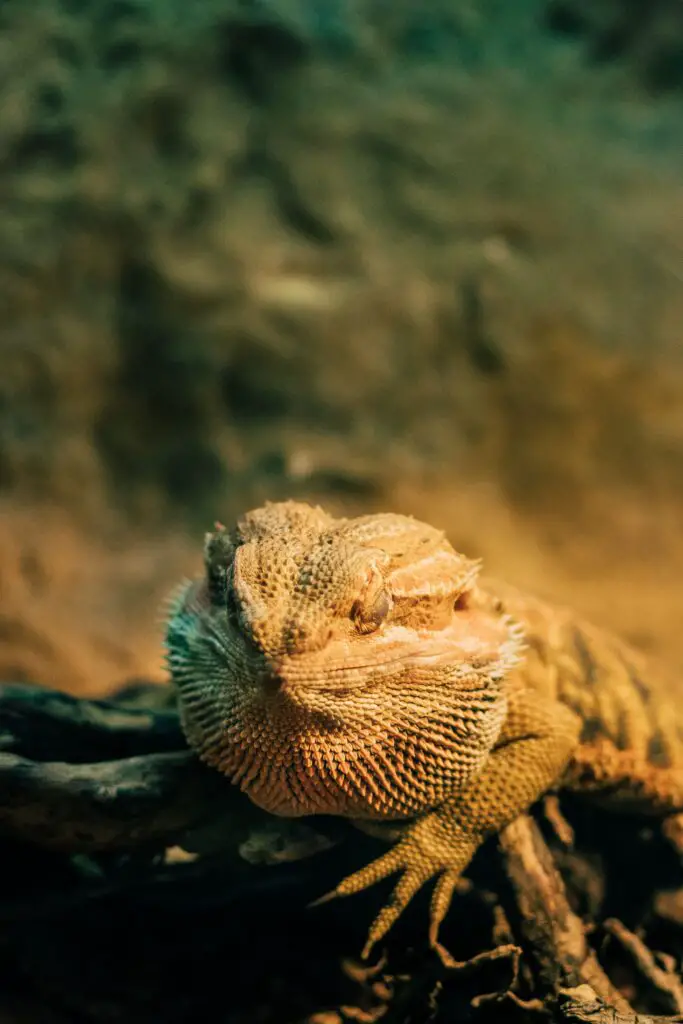How Many Dubia Roaches for Bearded Dragon
How many Dubia roaches for bearded dragon: Bearded dragons (Pogona vitticeps) are captivating reptiles that have become increasingly popular as pets due to their unique appearance and docile nature. Native to the arid regions of Australia, these fascinating creatures have a distinctive beard-like projection under their throat, which they can puff up when displaying territorial behavior or feeling threatened. Bearded dragons are known for their gentle temperament, making them excellent companions for reptile enthusiasts of all ages.
Brief overview of bearded dragons as pets
Bearded dragons have gained recognition as one of the most well-suited pet reptiles. They are relatively easy to care for and can live up to 10-15 years with proper husbandry. These diurnal lizards require a spacious enclosure with adequate lighting and temperature gradients to mimic their natural habitat.
One of the remarkable aspects of bearded dragons is their ability to develop strong bonds with their owners. With regular socialization and gentle handling, they can become accustomed to human interaction, recognizing and responding positively to their caregivers.
Importance of a balanced and nutritious diet for bearded dragons
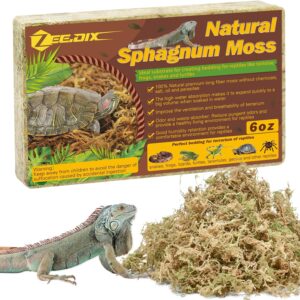 Providing a balanced and nutritious diet is crucial for the overall health and well-being of bearded dragons. As omnivorous reptiles, they require a combination of animal protein, plant matter, vitamins, minerals, and hydration to thrive. A diet lacking in essential nutrients can lead to various health issues such as metabolic bone disease (MBD), malnutrition, or obesity.
Providing a balanced and nutritious diet is crucial for the overall health and well-being of bearded dragons. As omnivorous reptiles, they require a combination of animal protein, plant matter, vitamins, minerals, and hydration to thrive. A diet lacking in essential nutrients can lead to various health issues such as metabolic bone disease (MBD), malnutrition, or obesity.
Proper nutrition plays a vital role in promoting growth, maintaining optimal body condition, supporting organ function, ensuring strong bones and muscle development while enhancing coloration in these striking reptiles. A well-balanced diet also aids in boosting immune function and reproductive health.
In the wild, bearded dragons consume insects such as Dubia roaches (Blaptica dubia), crickets, mealworms, and a variety of plant material including leafy greens, fruits, and flowers. Captive bearded dragons should be provided with a diet that mimics their natural food preferences while adjusting the proportions based on their age and specific dietary requirements.
It is important to note that the exact dietary needs of bearded dragons may vary depending on their age, size, activity levels, and health conditions. Therefore, it is essential for caregivers to understand the specific dietary requirements of these reptiles to ensure their optimal nutrition and well-being.
Understanding Dubia Roaches
Background information on Dubia roaches (Blaptica dubia)
Dubia roaches, scientifically known as Blaptica dubia, are a species of medium-sized insects native to Central and South America. They are widely recognized as one of the best feeder insects for bearded dragons due to their nutritional composition and ease of breeding. These roaches have become increasingly popular among reptile enthusiasts as a staple food source for their pets.
Dubia roaches are distinguished by their dark brown or black exoskeleton, which helps protect them from predators. They have six legs and two long antennae, allowing them to navigate their surroundings with ease.
Unlike some other feeder insects, Dubia roaches lack wings, making them unable to fly or climb smooth surfaces effectively. This feature is advantageous when it comes to keeping them contained within a bearded dragon’s enclosure.
Nutritional value of Dubia roaches for bearded dragons
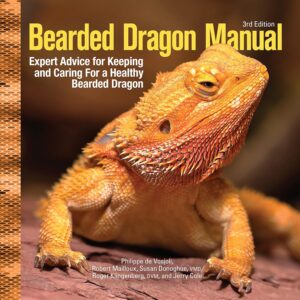 Dubia roaches offer an excellent balance of essential nutrients that are vital for the health and well-being of bearded dragons. These feeder insects possess a high protein content, which is crucial for muscle development and growth in reptiles.
Dubia roaches offer an excellent balance of essential nutrients that are vital for the health and well-being of bearded dragons. These feeder insects possess a high protein content, which is crucial for muscle development and growth in reptiles.
Additionally, they contain optimal levels of fat that contribute to energy production without risking obesity in bearded dragons when fed in moderation. Another significant advantage of feeding Dubia roaches to bearded dragons is their calcium-to-phosphorus ratio.
These insects boast higher calcium levels compared to other common feeder insects such as crickets or mealworms. Calcium is crucial for maintaining healthy bones, preventing metabolic bone disease (MBD), promoting proper nerve function, and assisting in blood clotting.
Furthermore, Dubia roaches are rich in vitamins such as vitamin B12, vitamin A precursors (beta-carotene), vitamin E, and various minerals like iron and zinc. These vitamins and minerals play vital roles in supporting the overall immune system, enhancing vision, promoting healthy skin, and aiding digestion in bearded dragons.
Dubia roaches are a highly nutritious food source for bearded dragons due to their ideal protein-to-fat ratio, calcium content, and abundance of essential vitamins and minerals. Their nutritional value significantly contributes to the overall health and vitality of bearded dragons when incorporated appropriately into their diet.
Determining the Feeding Amount
Factors to consider when determining the number of Dubia roaches to feed
When determining the appropriate number of Dubia roaches to feed your bearded dragon, several factors should be taken into consideration. These factors play a vital role in ensuring that your pet receives a well-balanced diet without overfeeding or underfeeding.
Age and size of the bearded dragon
The age and size of your bearded dragon are crucial factors in determining the feeding amount. Younger dragons require more frequent feedings due to their rapid growth and higher metabolic rate.
As they mature, their feeding frequency decreases, but portion sizes increase. Generally, smaller dragons should consume more Dubia roaches per feeding session compared to larger ones, as their energy requirements are relatively higher.
Activity level and metabolism of the bearded dragon
The activity level and metabolism of your bearded dragon also influence its feeding amount. Active dragons with high metabolic rates typically require larger quantities of food to meet their energy needs. On the other hand, if your dragon is less active or tends to have a slower metabolism, it may require fewer Dubia roaches per feeding session.
Dietary requirements based on growth stage (juvenile or adult)
Understanding your bearded dragon’s growth stage is important in determining its dietary requirements. Juvenile dragons experience rapid growth and therefore need more frequent meals rich in protein for proper development.
As they transition into adulthood, their protein intake can decrease while an emphasis on vegetables becomes significant for overall health. Adjusting the number of Dubia roaches according to these growth stages ensures that nutritional needs are met at each life phase.
Health condition and weight management goals
Considering your bearded dragon’s health condition and weight management goals is vital in determining the feeding amount. If your dragon is overweight or underweight, adjustments to the number of Dubia roaches should be made accordingly.
Consult with a reptile veterinarian to assess its condition and devise a feeding plan that promotes optimal health. By analyzing these factors, you can ensure that your bearded dragon receives the correct amount of Dubia roaches for its specific needs, promoting overall well-being and longevity.
Feeding Guidelines for Juvenile Bearded Dragons
Recommended feeding frequency for juvenile bearded dragons
Juvenile bearded dragons require more frequent feedings compared to their adult counterparts due to their rapid growth and higher metabolic rate. It is essential to establish a feeding routine that provides them with the necessary nutrients for healthy development. In general, experts suggest offering food to juvenile bearded dragons two to three times a day.
This frequent feeding pattern ensures they receive an adequate supply of energy and nutrients required for their growth. However, it is crucial to ensure that each feeding session offers an appropriate portion size and variety of foods.
Calculating the appropriate number of Dubia roaches per feeding session based on body weight percentage
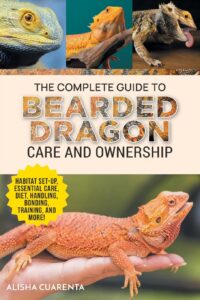 Determining the number of Dubia roaches to feed your juvenile bearded dragon requires careful consideration of its body weight percentage. As a general guideline, it is recommended to offer young beardies prey items that make up around 10-15% of their body weight per meal.
Determining the number of Dubia roaches to feed your juvenile bearded dragon requires careful consideration of its body weight percentage. As a general guideline, it is recommended to offer young beardies prey items that make up around 10-15% of their body weight per meal.
To calculate this, you will need an accurate scale and knowledge of your dragon’s current weight. For example, if your juvenile beardie weighs around 50 grams, you can start by offering prey items equivalent to 7-8 grams per meal (approximately 14-16% of its body weight).
As it grows, adjust the portion size accordingly by considering both the age and weight gain progress. It is important not only to focus on Dubia roaches but also incorporate a variety of other feeder insects and nutrient-rich plants into their diet.
This ensures a balanced nutritional profile suitable for your developing dragon while avoiding potential deficiencies or imbalances in essential nutrients. Overall, following these guidelines will help ensure that your juvenile bearded dragon receives adequate nutrition throughout this critical growth period, promoting healthy development and setting the stage for its future well-being as it transitions into adulthood.
Feeding Guidelines for Adult Bearded Dragons
Recommended feeding frequency for adult bearded dragons
Determining the appropriate feeding frequency for adult bearded dragons is essential to maintain their overall health and well-being. Unlike juvenile bearded dragons, who require more frequent meals due to their rapid growth and high energy levels, adult bearded dragons have slower metabolic rates and different nutritional needs.
As a general guideline, it is recommended to feed adult bearded dragons every 1-2 days. However, it’s important to note that the specific feeding frequency may vary depending on individual factors such as the dragon’s size, activity level, and overall health.
Observing your dragon’s behavior and appetite can provide valuable insights into their specific needs. If you notice that your bearded dragon consistently finishes its meals quickly or demonstrates signs of hunger between feedings, you may consider increasing the feeding frequency slightly.
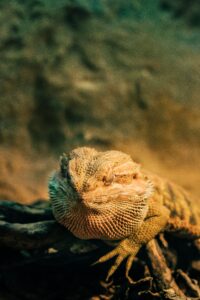
Adjusting the number of Dubia roaches based on activity level and weight management goals
The number of Dubia roaches to offer adult bearded dragons should not only reflect their dietary requirements but also take into account their activity levels and weight management goals. Bearded dragons that are more active or engage in frequent exercise may require a higher caloric intake compared to those with a lower activity level. To ensure proper nutrition without compromising weight management objectives, it is recommended to adjust the quantity of Dubia roaches accordingly.
If your dragon maintains an ideal weight range or needs to shed some excess pounds, consider slightly reducing the number of Dubia roaches per feeding session while maintaining the overall nutritional balance provided through other food items. It’s crucial to strike a balance between adequate nutrition and preventing obesity in adult bearded dragons.
Monitoring their body condition regularly by observing their physique and consulting with a reptile veterinarian can help determine if adjustments need to be made in terms of the number of Dubia roaches offered during each feeding session. Remember, it’s always better to seek professional advice tailored to your specific dragon’s needs to ensure an optimal feeding routine that promotes their long-term health and well-being.
Supplementing with Other Foods
Importance of a varied diet for bearded dragons’ overall health and well-being
Bearded dragons, like many other reptiles, require a varied diet to ensure they receive all the essential nutrients necessary for their growth and well-being. While Dubia roaches are an excellent staple food for bearded dragons due to their high protein content, it is crucial to supplement their diet with complementary food items.
Providing a diverse range of foods helps mimic their natural feeding habits and ensures they receive a balanced nutritional intake. A varied diet not only provides different nutrients but also stimulates the bearded dragon’s interest in eating.
It prevents monotony and encourages them to explore different tastes and textures. By offering various food items, you can cater to their natural instincts and promote overall well-being.
Suggested food items to complement Dubia roach feedings, including vegetables, fruits, and calcium supplements
To provide a balanced diet for your bearded dragon alongside Dubia roaches, it is advisable to include fresh vegetables and fruits. Vegetables such as collard greens, mustard greens, kale, dandelion greens, and squash are excellent options as they are rich in vitamins A and C while providing fiber for digestion. These leafy greens should make up a significant portion of the vegetable component in their diet.
In addition to vegetables, incorporating fruits can offer additional vitamins and minerals. Options like berries (blueberries or raspberries), melons (watermelon or cantaloupe), or papaya can provide variety while contributing dietary fiber.
Furthermore, calcium supplementation is crucial for maintaining optimal bone health in bearded dragons. Calcium powder specifically formulated for reptiles should be dusted onto the Dubia roaches or sprinkled on other food items before feeding them to your pet.
This supplementation helps prevent metabolic bone disease (MBD) and ensures proper growth and skeletal development. Remember to balance the diet by offering a variety of these supplementary food items, keeping in mind the age, size, and nutritional needs of your bearded dragon.
Regularly assess their dietary requirements and seek advice from a reptile veterinarian if needed.
To Sum Up How Many Dubia Roaches for Bearded Dragon
Providing an appropriate number of Dubia roaches in your bearded dragon’s diet is vital for its overall well-being and nutrition. By considering factors such as age, size, activity level, and weight management goals, you can determine the optimal feeding amount for your beloved pet reptile.
Remember to offer a diverse diet that includes not only Dubia roaches but also vegetables, fruits, and calcium supplements to ensure a balanced nutritional intake. By following these guidelines, you can promote a long and healthy life for your bearded dragon, fostering a rewarding and fulfilling companionship between you and your scaly friend.
Further Reading:
- Carolina Custom Cages Terrarium Review
- 8 Best Basking Rocks for Beardie: What Is the Best Choice?
- 10 Best Thermometers for Beardie: How to Choose the Best One?
- 5 Best Beardie Lighting Setups for Beardie Lovers
- 9 Best Heat Lamps for Beardie: Natural Habitat Provided

